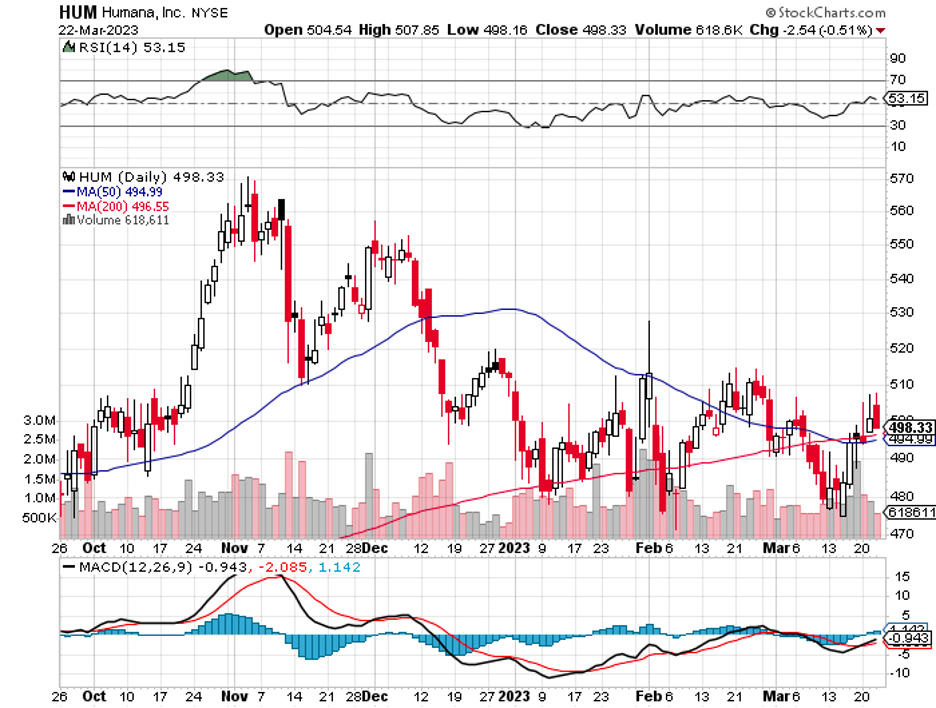The entire point of investing is to place your hard-earned cash to work for you, hoping that one day you will no longer need to work just as hard. A growth investing strategy could deliver just that when executed correctly and offered sufficient time.
Choosing stocks that can survive and even thrive in just about any type of economic environment is typically a critical contributing aspect to the success of an investment strategy. While daunting, this step doesn’t need to be complicated. Investors simply need to focus on picking stocks under sectors of the economy that are vital.
Healthcare is one of the sectors that constantly perform well regardless of the turmoils happening across the globe. This is because patients depend on the goods and services this industry offers at all times.
Narrowing it down some more, the segment in the healthcare world that should be taken into consideration when selecting stocks is the health insurance sector.
The health insurance industry worldwide is projected to grow by 7.1% every year from an already whopping $1.7 trillion in 2022 to approximately $2.6 trillion by 2028.
For companies like Humana (HUM), focusing on older patients is a crucial strategy in dominating this sector.
To date, Humana has roughly 22.3 million members enrolled in its medical, vision, dental, and supplemental programs, ensuring that the company can sustain its operations and still have room to expand. This company has an impressive $64 billion market capitalization, ranking it as the fifth biggest health insurer in the world.
Humana’s pièce de rèsistance is Medicare Advantage. The plans provide seniors with sets of bundled benefits and charge a handful of out-of-pocket payments.
This segment generated around $73 billion in sales last 2022, with the insurance premium offerings comprising over 84% of the company’s revenue. The remaining 16% comes from its newly launched CenterWell platform, which offers pharmacy, home care, and primary care services to seniors. In terms of revenue, these figures put Humana in second place behind UnitedHealth Group (UNH).
Even considering the potential slowdown in adding new members, the sheer number of patients signing up for Medicare Advantage most likely won’t. At the moment, about 30 million of the total 60 million seniors in the United States alone subscribe to the plans, with the other 30 million anticipated to sign up eventually. On top of that, the number of senior patients is expected to keep climbing to reach 95 million by 2060.
Despite the incredible potential of this segment, Humana has more to offer than simply Medicare Advantage.
The health insurer is ramping its CenterWell venture by acquiring more physician practices. In 2022, the number of primary-care units handled by the company rose to 235 from the 206 centers recorded in 2021. Humana collaborates with them in searching for low-cost, reliable options for patients. This strategy is a win-win for both parties.
Although it’s still a tiny business compared to Humana’s Medicare Advantage system, the figures from the CenterWell segment look promising. In the fourth quarter of 2022, it reported $4.1 billion in sales with an operating margin of 6.4%. That’s beyond the health insurer’s anticipated margin for 2023, which was set at roughly 4.8%.
As CenterWell expands in terms of how much it contributes to Humana’s total, the company’s operating margin is predicted to grow to about 5.2% by 2026. This would indicate approximately 14% annual earnings per share growth through 2026.
Humana’s 0.6% dividend yield is a potential turnoff factor, which pales compared to the S&P 500’s 1.6%. Still, this isn’t necessarily bad if given the proper context. Over the past 10 years, Humana’s quarterly dividend paid per share has continuously tripled.
This is a promising indication, especially since the dividend payout ratio of Humana was only 12% in 2022. Hence, the company has nowhere else to go but up. This is because offering a conservative payout enables Humana to maximize its funds and focus on growing the business and strengthening its balance sheet. That’s clearly why the health insurer should have no problems delivering double-digit dividend boosts within the next few years.
Overall, Humana is a demonstrably excellent company, but the stock remains underrated. I suggest you exploit the market’s disinterest in this profitable business and buy the dip.


